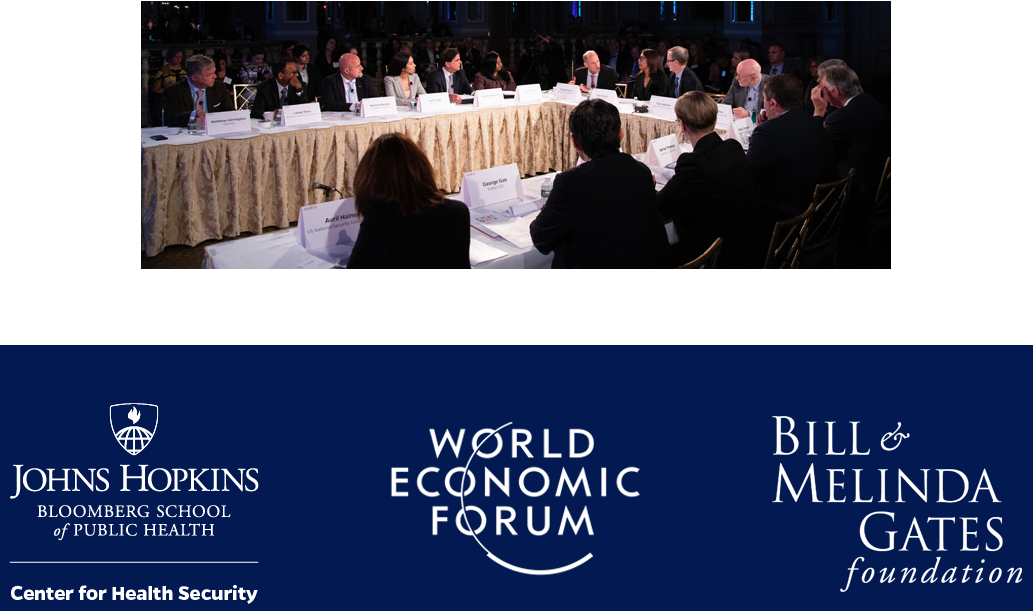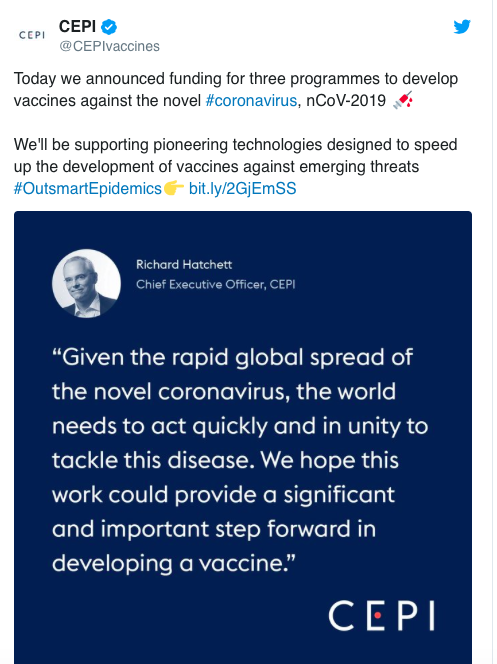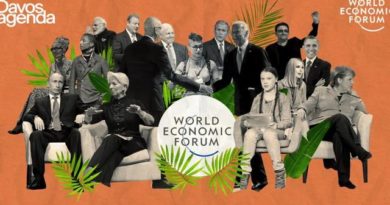COVID-19 Coronavirus: The Crisis. “You Simulate and Then You Go Live”
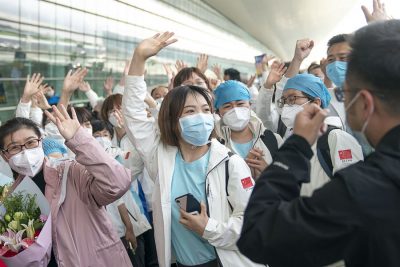
First published on March 27, 2020. Interview conducted in mid-March.
“So there you are. You simulate and then you go live. I’m not suggesting any kind of conspiratorial relationship, but I’m just saying there was a simulation [Event 201, October 2019] and a couple of months later the whole thing goes live with the same actors involved in the simulation who are now involved in saving the world from the coronavirus.”
Michel Chossudovsky discusses his new series of research articles on the “pandemic” including, “COVID-19 Coronavirus “Fake” Pandemic: Timeline and Analysis” and “Coronavirus COVID-19: “Made in China” or “Made in America”?, among others. A blockbuster show!
Now includes full transcript
***
On January 30th 2020, the World Health Organization (WHO) declared a Public Health Emergency of International Concern (PHEIC) in relation to China’s novel coronavirus (2019-nCoV) categorized as a viral pneumonia. The virus outbreak was centred in Wuhan, a city in Eastern China with a population in excess of 11 million.
In the week prior to January 30th decision, the WHO Emergency Committee “expressed divergent views”. There were visible divisions within the Committee. On January 30th, a far-reaching decision was taken without the support of expert opinion at a time when the coronavirus outbreak was limited to Mainland China.
There were 150 confirmed cases outside China, when the decision was taken. 6 in the United States, 3 in Canada, 2 in the UK, etc.
150 confirmed cases over a population of 6.4 billion (World population of 7.8 billion minus China’s 1-4 billion).
What was the risk of being infected? Virtually zero.
Michel Chossudovsky and Bonnie Faulkner on Guns and Butter
Read the transcript below.
***
This is Guns and Butter.
The WHO Director-General, who had been in Davos just a few days earlier, determined that the so-called outbreak constituted a Public Health Emergency of International Concern, and, as I mentioned, that decision was taken on the basis of 150 confirmed cases outside China. Now, anybody who takes cognizance of that should not trust anything else that they say because at the beginning is a big lie, and it’s a big lie which is instrumented by very powerful people. It’s the combination of what I call Big Money and Big Pharma.
I’m Bonnie Faulkner. Today on Guns and Butter, Michel Chossudovsky. Today’s show: COVID-19 Coronavirus: The Crisis.
Michel Chossudovsky is an Economist and the Founder, Director and Editor of the Center for Research on Globalization, based in Montreal, Quebec. He is the author of eleven books including Globalization of Poverty and the New World Order, War and Globalization: The Truth Behind September Eleventh, America’s “War on Terrorism” and The Globalization of War: America’s “Long War” against Humanity.
Today we discuss the historical background and lead-up to the World Health Organization’s January 30th Declaration of a Public Health Emergency of International Concern; Event 201: Simulation of a Coronavirus Pandemic; the World Economic Forum; financial warfare; and the economic and human toll of the declared pandemic.
Bonnie Faulkner: Michel Chossudovsky, welcome.
Michel Chossudovsky: Good morning. Delighted to be on Guns and Butter.
Bonnie Faulkner:The United States government has now declared the COVID-19 virus a global pandemic. Your article, COVID-19 Coronavirus “Fake” Pandemic: Timeline and Analysis, begins with the January 30th, 2020 World Health Organization declaration of a Public Health Emergency of International Concern in relation to China’s novel coronavirus 2019-nCoV, categorized as a viral pneumonia. Both the timing and the intent of the WHO’s declaration raise serious questions. Where is the best place to start and examine what is behind this now global disruption?
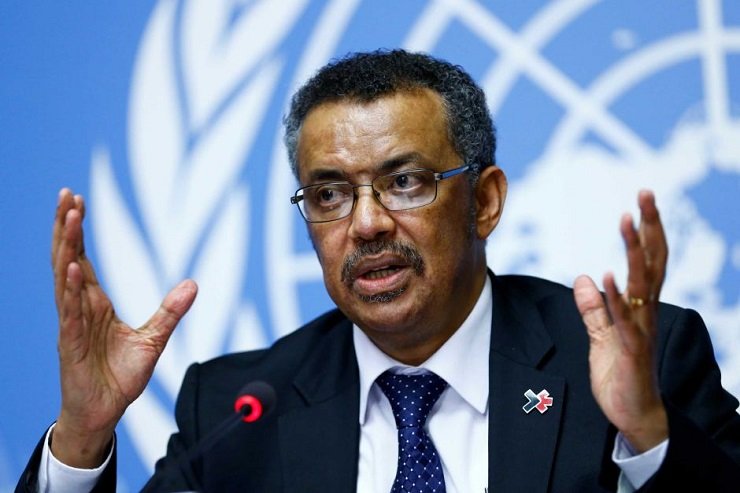 Michel Chossudovsky: First of all, I should mention – and this is where all the lies come in – is that on the 30th of January the global public health emergency was declared on the orders of the Director-General of the WHO ( right) . There have been recent statements that this public health emergency has been declared but, in fact, it was declared on the 30th of January, but nobody wants to talk about that for the simple reason that at that time there were only 150 confirmed cases outside of China. In other words, we’re talking about a population of 6.4 billion, (excluding China which is 1.4), out of a world population of 7.8 billion, and there they go ahead and declare a global health emergency. 150 cases does not justify it. But in fact, it did, but it was dictated by very powerful economic interests. So we’re starting with a lie.
Michel Chossudovsky: First of all, I should mention – and this is where all the lies come in – is that on the 30th of January the global public health emergency was declared on the orders of the Director-General of the WHO ( right) . There have been recent statements that this public health emergency has been declared but, in fact, it was declared on the 30th of January, but nobody wants to talk about that for the simple reason that at that time there were only 150 confirmed cases outside of China. In other words, we’re talking about a population of 6.4 billion, (excluding China which is 1.4), out of a world population of 7.8 billion, and there they go ahead and declare a global health emergency. 150 cases does not justify it. But in fact, it did, but it was dictated by very powerful economic interests. So we’re starting with a lie.
But the thing is, we’re starting with a lie on January 30th. And then on January 31st what happens? Immediately the Trump administration calls for a ban on air travel to China. In other words, a declaration to the effect that both Chinese and foreign travelers (from China) will not be admitted to the United States. This has the effect of essentially intimidating people, closing down trade and trade transactions.
We’re talking about a very important volume of trade and transportation with China, affecting, of course, major airlines and shipping companies. So that happened on the 31st. We’re talking about the timeline. On the 31st of January, Trump already launches a hate campaign against China, and there was no health issue of concern, because 150 cases worldwide outside China is virtually nothing as far as risk is concerned.
Then we see the evolution of this crisis and what I’m saying, and we must be very clear on that, is that this is not a biological war against China or against of anybody else; it is the use of the coronavirus as a pretext to implement drastic changes which affect economic activity, trade, transportation, which ultimately has an impact on national economies. It sort of pushes national economies into a situation of crisis. At the outset, we were dealing with economic warfare supported by a media campaign, and this was coupled with the deliberate intent by the Trump administration to undermine the Chinese economy.
But I think we should be clear that the media disinformation campaign was fundamental, because first of all, they never mentioned that it was 150 cases to start with, and they’ve always distorted the figures with regard to the extension of this health threat throughout the world.
Bonnie Faulkner: What is the WHO Emergency Committee?
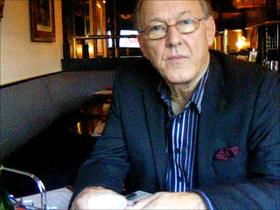 Michel Chossudovsky: The WHO Emergency Committee is a committee made up of specialists – and I should mention that they first met on the 22nd of January and there were divisions within the committee as to whether they had the justification to actually declare a global emergency [the pandemic was declared on March 11]. And then, when they met on the 30th, the meeting on the 30th took place shortly after the Davos World Economic Forum, which took place from the 21st to the 24th of January. And at that meeting there were important discussions between different partners including the World Economic Forum, the Bill and Melinda Gates Foundation and various entities linked up to Big Pharma.
Michel Chossudovsky: The WHO Emergency Committee is a committee made up of specialists – and I should mention that they first met on the 22nd of January and there were divisions within the committee as to whether they had the justification to actually declare a global emergency [the pandemic was declared on March 11]. And then, when they met on the 30th, the meeting on the 30th took place shortly after the Davos World Economic Forum, which took place from the 21st to the 24th of January. And at that meeting there were important discussions between different partners including the World Economic Forum, the Bill and Melinda Gates Foundation and various entities linked up to Big Pharma.
Those consultations at the World Economic Forum were essentially instrumental to the decision taken on the 30th. It happened just about a week later. It was essentially the World Economic Forum, the Gates Foundation, a body called CEPI, which is this Coalition for Epidemic Preparedness Innovations for the Development of Vaccines – already there were discussions with Big Pharma, GlaxoSmithKline, which is also integrated into this group. There were discussions with the IMF and the World Bank, with the State Department, with US Intelligence. And one suspects that the decisions were taken a few days before, because when they met on January 30th in Geneva there was virtually no discussion. The WHO Director-General, who had been in Davos just a few days earlier, determined that the so-called outbreak constituted a Public Health Emergency of International Concern, and, as I mentioned, that decision was taken on the basis of 150 confirmed cases outside China.
Now, anybody who takes cognizance of that should not trust anything else that they say because at the beginning is a big lie, and it’s a big lie which is instrumented by very powerful people. It’s the combination of what I call Big Money and Big Pharma. And essentially they initiated this process. They also have a vaccine program and, ironically, the vaccine program was – in a sense also announced at Davos before even having pandemic. It was announced at Davos and discussed, and it was only much later in February that the vaccination campaign was announced by the World Health Organization. In fact, it was February 28th. It was a month later. Dr. Tedros of WHO announces that a massive WHO vaccination campaign has been approved by the World Health Organization. And who is behind that campaign? GlaxoSmithKline in partnership with the Coalition for Epidemic Preparedness Innovations, which is a Gates/World Economic Forum partnership.
Another important thing is that back in October, on October the 18th, the Gates Foundation together with the World Economic Forum and in partnership with Johns Hopkins School of Public Health – but it was a very specific component of the School of Public Health – it was the Johns Hopkins Bloomberg School of Public Health. You can see that Johns Hopkins School of Public Health is already linked to Wall Street.
But it was the Center for Health Security. So there you have a partnership between the Center for Health Security, the World Economic Forum, the Bill and Melinda Gates Foundation, and what do they do on October 16th? This was, of course, way before the public announcement of the coronavirus, which was at the beginning of January when the Chinese authorities discovered it and began testing it. They discovered it on January 1st and then on January 7th they actually came up with lab exams and so on.
But back on October 18th there was a simulation of a coronavirus pandemic. It was called Event 201. That simulation was integrated by a whole series of people from mainly private financial institutions, corporate execs, foundations, Big Pharma, CIA, there was a representative from the CDC but there were no health officials on behalf of national governments or the WHO. It was essentially a simulation which included quite a number of things, including the collapse of stock markets, the extension of the virus to something like 65 million people and so on and so forth.
[embedded content]
Now, what I am suggesting, without necessarily drawing conclusions, is that the organizations involved in the simulation, which was a detailed simulation with videos and so on examining what would happen to financial markets, what would happen to the media, to the independent media and so on – essentially the people involved in the simulation were also involved in the actual management of the pandemic once it went live.
So the people who were simulating actually went live on January 30th, 2020, which was the day when that [global health emergency was launched] [Officially the pandemic was launched on March 11]. I should mention that the people who actually were behind the WHO meeting on the sidelines of Davos are the same people who organized and financed the [global health emergency]: the Bill and Melinda Gates Foundation and the World Economic Forum and the Bloomberg School of Public Health.
So there you are. You simulate and then you go live. I’m not suggesting any kind of conspiratorial relationship, but I’m just saying there was a simulation and a couple of months later the whole thing goes live with the same actors involved in the simulation who are now involved in saving the world from the coronavirus.
Now, here’s another element, whether it is relevant or not. On October 18th Event 201, Baltimore, Coronavirus Simulation and Emergency Preparedness Task Force at Johns Hopkins Bloomberg School of Health Security, they identified the virus under the acronym nCoV-2o19. I’ll repeat: nCoV-2019. Now, when the actual virus was discovered two months later – it was early January, two and a half months later. To be precise, it was on January the 7th that the Chinese authorities identified a new type of virus. They isolated it on 7 January and the coronavirus was named by the WHO as 2019-nCoV – exactly the same name as that adopted in the World Economic Forum/Gates/Johns Hopkins October 18th, 2019 simulation exercise. So it’s as if they took that name and they stuck it into – it became then, of course, a real pandemic. But bear in mind, at a later date they changed the name. They must have realized that that name was misleading because it was the name of a simulation. But it started up as 2019-nCoV and then after that they adopted the COVID-19. But I think that happened almost a month later, and these were names which were attributed to the virus by the World Health Organization.
Bonnie Faulkner: It seems to me that they had to change the name because it was too big of a giveaway as to what was going on.
Michel Chossudovsky: I don’t want to draw any kind of implications. I’m just saying it appears odd that they would choose the same name for the virus as the one which they had for the simulation, and in my view, the nCoV reflects what it is. N stands for novel and Co, Coronavirus. It was a novel coronavirus.
Now, I think to avoid any confusions they then adopted a different name to that of the simulation and exercise. Nobody denies that these simulations took place. There’s a video – I’m going to play that video for you, and I think it’s the video from the simulation. They had tons of videos – you can go through it, but let’s say this video is so incredible because it’s the first few minutes. Here it is:
Woman: Okay. We will now advance three weeks to the fourth and final meeting of the Pandemic Emergency Board, on December 18th, 2019.
Man: Okay. Thank you for reconvening and let’s get an update from Dr. Rivers.
Dr. Rivers: In the last three weeks, case numbers have continued to grow exponentially. We now have an estimated 4.2 million cases, and 240,000 deaths. Almost every country is now reportinßg cases, and those who aren’t may simply not have the resources to conduct surveillance. We don’t see any change in the rate of rapid spread, and models estimate that we could have more than 12 million cases and close to a million deaths by mid-January. We’re not sure how big this could get, but there’s no end in sight. Financial markets are universally down by 15% or more on the year. Fear of a catastrophic pandemic and uncertainty about the capacity for governments to respond –
[embedded content]
When the organizers of the simulation were confronted, particularly at the height of the financial crash, end of February, they said, “Well, we’re not predicting anything. We’re not predicting what happened. We’re just simulating.” But it just so happens that in fact it was practically word by word, that they simulated an initial collapse of financial markets of “15% or more.” Now, I checked the financial press in late February. In late February I checked the financial press and Bloomberg and the Wall Street Journal, and that was exactly what happened, and they used the same words, 15% or more, was the collapse of money markets at that time. Now, since then, the situation has evolved.
But the thing is that this simulation was not taken by an independent body of scientists and researchers and economists. No, it wasn’t. It was taken by Big Money and Big Pharma. Big Money and Big Pharma were simulating. And then, meanwhile and before the pandemic was actually declared on January 30th– and there was no basis for declaring that pandemic – there were only 150 cases outside of China. About, what, six cases in the US, three in Canada, two in the UK. Well, we have the complete list; it’s provided by the World Health Organization. But before that historic venue, there was already a vaccination program, which was ongoing by different pharmaceutical companies.
Bonnie Faulkner: Michel, I’d like to go over some of this in greater detail. You write that, “The World Health Organization did not act to reassure and inform world public opinion. Quite the opposite. A fear pandemic rather than a genuine Public Health Emergency of International Concern was launched.” Would you describe this development as a media disinformation campaign?
Michel Chossudovsky: Absolutely. And I don’t think that the World Health Organization spearheaded the media disinformation campaign. The media disinformation campaign was already embedded with the organizations who were behind this initiative, in other words, the foundations, the World Economic Forum and so on. The media campaign, if it had been real news, first of all they should have said the decision of the WHO borders on ridicule; it’s in violation of its mandate; you don’t declare a global health emergency for 150 people. Punto. Six in America, two in Canada, three in the United Kingdom and so on. I think that should have been put forth, that this historic January 30thdecision was a big lie. And it was not only a big lie; it was the launchpad of a process of ultimately economic warfare.
I should clarify, because there’s a lot of confusion. This is not biological warfare, because the coronavirus is not a dangerous virus. It has certain similarities with other viruses. It triggers pneumonia, then there’s a recovery process. In fact, if we look at recent developments, the pandemic in China is more or less resolved. They’ve announced that more than 80% of confirmed cases have been resolved. Now, the media will not discuss that because once they say, “Oh, people are recovering, they’re getting well” and so on, that sort of undermines the panic. What they want to do is trigger panic, and that’s what people are doing right now. It’s fear and intimidation, it’s panic. People feel threatened, and the authorities are taking actions, which are not protecting people’s health but ultimately doing exactly the opposite.
Now, I’m not saying that coronavirus is not a health concern. It really is. But what is more of a concern are all the millions of people who lost their jobs as a result of the coronavirus, not to mention those who lost their lifelong savings on the stock exchange. Think of all the smaller investors who put their money with their broker and so on, and what happens? They lose everything when the market collapses. Now, that, of course, is a concern, and that has also health implications. Some people commit suicide when they lose their savings. But that simply is considered as part of a market mechanism.
It’s not part of a market mechanism. It is part of a process of manipulation through sophisticated speculative instruments such as short selling. We know that. And if you have foreknowledge that President Trump is going to implement a ban on trans-Atlantic travel to the European Union, immediately those who have foreknowledge can speculate on the collapse of the airline stocks. It’s very easy. They place a bet and if it goes down, they make money, and they know it’s going to go down. So that is where, of course, these powerful corporate interests and financiers and hedge funds are making a tremendous amount of money.
And what we are witnessing now is a transfer of money wealth, a concentration of money wealth, which I think is unprecedented. It’s perhaps one of the largest transfers of money wealth in modern history. In other words, it’s characterized by bankruptcies of small and medium-sized firms, mounting debt, mounting personal debts, corporate debts, the takeover of competing companies. And in a sense, it’s characterized by conflict within the financial establishment.
It’s not only a war against China. At the beginning it appeared to be an economic war against China, which led to the closing down of trade and shipping and so on, where factories had to close down and so on, not to mention the tourist industry. But it is more than that, because it also affects the internal balance of power within the financial establishment. The fact that the airlines are the victims of this is significant, because the airlines – their stock may collapse and then, of course, they’ll be bought up, and that means that there’s been a redistribution not only of money wealth but also of real wealth. These are assets.
Without pointing to the fact that the existence of the coronavirus, which generates uncertainty, panic, is ultimately the ideal environment for people who want to speculate and make money at the expense of those who have savings, at the expense of small businesses and at the expense of perhaps competing corporations. That’s the situation we’re in, and I don’t recall any period in our recent history that is comparable to what we’re living now, where entire economies are in a standstill – I think of Western Europe, Italy, where people are ordered to stay at home and so on, and this ultimately has been achieved under the pretext – the pretext – of a virus, of a coronavirus. They said, “We must protect our population so let’s close down the economy.” Well, you don’t protect your population by closing down an economy. You can take certain public health actions which are selective and well thought out, but that’s not what’s happening.
Bonnie Faulkner: Getting back to the virus, you write, “Remember the unusual circumstances surrounding the April 2009 H1N1 Swine Flu pandemic.” What were these unusual circumstances? Was the data manipulated?
Michel Chossudovsky: This is not the first time that the WHO has declared a fake pandemic. I am talking about the decision taken on the 30th of January where we only had 150 people outside of China who were confirmed cases.
In 2009, April, there was another case, which was called the H1N1 Swine Flu pandemic. The same atmosphere of fear and intimidation prevailed. The process was somewhat different but the statements made by the WHO Director-General at the time were far-reaching, because Margaret Chan, WHO Director-General in 2009, stated with authority that as many – I’m quoting, from the World Health Organization – “as many as two billion people could become infected over the next two years, nearly one-third of the world population.”
Now, what was Margaret Chan involved in, in making this statement? It was a multi-billion-dollar bonanza for Big Pharma, which was instructed by the WHO Director-General Margaret Chan to implement a massive vaccination program. She further states later on the following and, again, I’m quoting, “Vaccine makers could produce 4.9 billion pandemic flu shots per year in the best-case scenario.” Can you imagine 4.9 billion pandemic flu shots per year in the best-case scenario? In other words, this was a green light to the vaccine producers to produce billions of flu shots for the H1N1 and it was also a green light to national governments to actually purchase these billions of flu shots from the pharmaceutical companies.
Now, it turns out that this campaign in 2009, which was launched by the WHO, relied on fake news, fake statistics and lies at the highest levels of government. When it was debated under the Obama administration, Obama actually said, “Swine Flu could strike up to 40% of Americans over the next two years and as many as several hundred thousand could die if a vaccine campaign and other measures aren’t successful.” There were several statements – Associated Press: “The US expects to have 160 million doses of Swine Flu vaccine available sometime in October.” That statement was made in July of 2009. Business Week: “Wealthier countries such as the US and Britain will pay just under $10 per dose for the H1N1 flu; developing countries will pay a lower price.” And so on. This was a multi-billion-dollar fraud in favor of Big Pharma and, in fact, there was no pandemic. Millions of doses of Swine Flu vaccine had been ordered by national governments. Millions of vaccine doses were subsequently destroyed. There was a problem of collecting the data as to whether it was the seasonal flu Influenza Virus B, or whether it was the Swine Flu vaccine. The data was manipulated and there was ultimately no investigation into who was behind this multi-million-dollar fraud.
But I think we have to acknowledge, because things sometimes come much later, that in the wake of that fake pandemic there was a meeting of the Parliamentary Assembly of the Council of Europe, which is a human rights watchdog, and they questioned the motivations of the WHO. They actually made the statement that the World Health Organization was involved in conflict of interest and that the pandemic was fake. That investigation is on record with the European Parliament. There we have an example of what happened. There were no economic and social implications as exist today, there were no actions to repeal air travel and so on but, let’s say from the point of view of the vaccination program – that vaccination program was launched and ultimately it was totally dysfunctional and the pharmaceutical companies cashed in on large amounts of money, which were largely funded by the taxpayers’ because it was the budget of the Ministries of Health.
And then, of course, the H1N1 mutated. So the vaccines were totally useless. It’s very similar to a seasonal flu pandemic; there’s a mutation of the virus. I recall in Canada, the Ministry of Health ordered millions of doses of the vaccine and then they acknowledged, they said, well, we can’t use them because you know the H1N1 virus has mutated. So what they did is they said we’re going to send that in the form of aid to developing countries, which was in effect also a fraud because the vaccine couldn’t be used from a health point of view, but then they decided simply to send it off to some country in Latin America or Sub-Saharan Africa, knowing that the virus in itself had mutated and that these vaccines were totally useless.
So there we have a situation where the Director-General of the WHO gives the green light to Big Pharma, making erroneous statements to the effect that billions of people across the world will be affected, as many as two billion, she said, and we must act, and Big Pharma comes to the rescue and in effect the vaccine makers made a bundle of money at the expense of the public purse.
Bonnie Faulkner: Now, in the current situation, coming up to 2020 – you’ve been talking about 2009 – you write that, “The campaign to develop vaccines was initiated prior to the decision of the WHO to launch a global public health emergency.” Is that right?
Michel Chossudovsky: That’s correct. There are several things. One, there was a decision taken at Davos where they actually stated that a vaccine campaign was necessary, and that decision precedes the pandemic by about a week. But there are indications that, in fact, for them to have made that statement the companies involved were already working on the vaccine. Now, I can’t say exactly when they started, but certainly well before the World Economic Forum and certainly well before the launching of the pandemic. Mind you, the number of cases were so small in late January of 2020 – it was 150 cases outside China; those are WHO statistics. Now, you’re not going to initiate a vaccine campaign internationally for 150 people, but I think that there must have been some kind of foreknowledge that eventually the pandemic would move forward with a fear campaign, the media disinformation and then ultimately the recipients would be the vaccine producers, Big Pharma. And they already had a working relationship with the foundations. They were involved in the consultations in Davos. They were also directly or indirectly involved in the simulation scenario back in October. So maybe the simulation back in October is what gave the green light to Big Pharma. I think that’s certainly feasible because they were already talking about vaccinations in the simulation. So the simulation was talking about the need to develop vaccines for their hypothetical nCoV virus, as it was called at the time, and there was also evidence that before the pandemic was actually officially launched on 30th of January that the vaccination program had been announced at Davos.
Now, there’s another important announcement that was made, but it came a month later. That was by the WHO saying – I think it was in mid- to late-February when the WHO confirmed categorically that there was the need for a vaccination campaign. But that statement was made after the industry took the decision to develop the vaccines. And there are quite a number of companies involved.
Bonnie Faulkner: What is CEPI? What does that stand for? Is this a vaccine organization?
Michel Chossudovsky: Yes. The CEPI is a very important body and also actor in this whole process. It is the Coalition for Epidemic Preparedness Innovations, and it is essentially part of the World Economic Forum/Gates partnership. They made an announcement quite early in the game to the effect that they would be funding several programs to develop vaccines against the so-called coronavirus. At that time it was called nCoV-2019. The CEPI works in consultation with the Gates Foundation and the WEF, and it also is tied into the pharmaceutical industry. Their major partner is GlaxoSmithKline.
Bonnie Faulkner: Now, at the same time as this simulation Event 201 in Baltimore on October 18th, from October 18th to the 27th of October 2019, the CISM Military World Games were taking place in Wuhan, China. What are Military World Games, and who were the participants?
Michel Chossudovsky: These games, it’s a sport event, which takes place I guess once a year in different countries. There are more than 100 countries which participate, and they send in members of the armed forces, but essentially for sport events. Some people call it the Military Olympics.
Now, what the Chinese authorities have raised, and this relates in a very direct way to the fact that the virus may not have originated in China but may have originated in a foreign country, including the United States, is that there were 200 American military personnel participating in this 10-day event. Of course, they’re there and they visit the city and they go around, etc., etc. It has been intimated that the virus could have been either accidentally or deliberately dropped somewhere in the seafood market in Wuhan.
Now, we have absolutely no proof, but there are scientific assessments of the virus, and it’s a bit complex to explain, to the effect that what they call patient zero which – there’s patient zero and patient one – the thing is, where is that patient zero? Is the patient zero in the United States? In other words, assuming that it comes either from an animal or from a lab, etc., and then it’s transported to China.
Also, interestingly, the Chinese as well as Taiwanese and Japanese virologists have examined – looking at different strains of the virus in different locations – they have come to the conclusion that the virus was not made in China. At this very moment there’s a big debate in China on whether the virus is made in China or made in America. Increasingly, the scientific evidence points to the latter.
What is significant is that in recent developments we even have evidence that emanates – at least statements which emanate from the Director-General of the CDC – in other words, I’m talking about Robert Redfield, who made a statement just this week to the US Congress. It was during hearings of the so-called House Oversight Committee. He makes statements to the effect that some of the diagnoses of the common flu in the United States, the seasonal flu, Virus B, could have been coronavirus. This was in a committee context, and he answered the questions in a somewhat candid way and he said, “Yes, in some cases diagnosed as seasonal flu could have been coronavirus.”
Bonnie, there are two pieces of audio which I think you should broadcast. I’ll broadcast the first one now and you’ll hear it. That is the one by Redfield. It’s 30 seconds.
CDC director Robert Redfield admitted some Americans who seemingly died from influenza were tested positive for novel #coronavirus in the posthumous diagnosis, during the House Oversight Committee Wednesday. #COVID19 pic.twitter.com/kk7q0bKE6p
— Global Times (@globaltimesnews) March 12, 2020
Redfield: University of Washington has developed their own tests –
Congressman: Were those test kits available last Friday?
Redfield: Yes, sir.
Congressman: Thank you. And without test kits, is it possible that those who had been susceptible to influenza might have been mischaracterized as to what they actually had, it’s quite possible they actually had COVID-19?
Redfield: The standard practice is the first thing you do is tests for influenza. So if they had influenza they would be positive for –
Congressman: But only if they were tested. So if they weren’t tested, we don’t know what they had.
Redfield: Correct.
Congressman: Okay. And if somebody dies from influenza, are we doing post-mortem testing to see if it was influenza or it was COVID-19?
Redfield: There is a surveillance system to test for pneumonia that the CDC has. It’s not in every city, every state, every hospital.
Congressman: So we could have people in the United States dying for what appear to be influenza when in fact it could be the coronavirus or COVID-19.
Redfield: Some cases have been actually diagnosed that way in the United States today.
Congressman: Thank you.
Now, that statement corroborates the studies conducted in China and Japan and Taiwan, but it also begs the question, when? Was it in October? Was it in November? Was it in December? In other words, Redfield’s statement doesn’t say when those influenza tests were conducted. Well, they’re conducted on a routine basis. Presumably if it’s seasonal it starts in November or October and it extends right through the winter.
But what happened is that this statement in effect provides legitimacy to studies conducted by Japanese, Chinese and Taiwan virologists to the effect that it is possible that the virus did not originate in the seafood market in Wuhan; it actually could have originated in the United States of America. And the Taiwan virologist stated, because he was following what was going on, that there were more than 200 pneumonia type cases which resulted in death in the United States, and it was triggered by the patient’s inability to breathe. Then he said he was in touch with US health authorities and he begged the question whether those deaths could have been the result of the coronavirus. He also said that the virus outbreak may have begun at an earlier period than what is assumed, suggesting that it could even go back to September. And I presume it goes back to September because that’s when the flu virus actually starts to develop.
But I think what’s important is that – one of our own authors, Larry Romanoff, who is based in Shanghai, has done extensive research on this issue and if we patch together the statements of Robert Redfield, the Japanese, Taiwanese and Chinese studies, there is a good likelihood that the virus did not come from China but it could well have originated in the United States. It is a talking point in China at this very moment because the spokesperson of the Ministry of Foreign Affairs – and the Chinese don’t actually improvise in the same way as Americans their foreign policy stance – but when they’re commenting on the CDC Director Dr. Robert Redfield they say, well, you know, this kind of information has to be explained. If the US reported 34 million cases of influenza that’s – I think he’s exaggerating but that’s what he says – I’m talking about the representative from the Ministry of Foreign Affairs. I think it’s more like 15 million – but in any event, he then concludes and says, please tell us how many are related to COVID-19. That is a tweet – the Chinese also adopted tweets.
What the Director Robert Redfield has admitted is that seemingly some people who have died from influenza could have been tested positive for the coronavirus. So this has opened up Pandora’s Box, so to speak, because the consensus in China is that the virus was not made in China; it was made in America.
It remains to be fully assessed and so on, but it changes the rhetoric. It also changes China’s geopolitical position. China is now at the stage where the pandemic is almost over. I think in a matter of a couple of weeks they’re going to go back to normal life throughout the country, and then they also are now going to acknowledge that the possibility is that this virus did not originate in China.
Bonnie Faulkner: Michel Chossudovsky, thank you so much.
Michel Chossudovsky: Delighted to be on the program. This is a very important topic. Best wishes.
*
I’ve been speaking with Michel Chossudovsky. Today’s show has been COVID-19 Coronavirus: The Crisis. Michel Chossudovsky is an economist and the Founder, Director and Editor of the Center for Research on Globalization, based in Montreal, Quebec. The Global Research website, globalresearch.ca, publishes news articles, commentary, background research and analysis. Since posting a series of very credible research articles on the novel coronavirus, GlobalResearch’s readership has exploded, and they have added many tens of thousands of new readers in China.
Guns and Butter is produced by Bonnie Faulkner, Yarrow Mahko and Tony Rango. Visit us at gunsandbutter.org to listen to past programs, comment on shows, or join our email list to receive our newsletter that includes recent shows and updates. Email us at [email protected]. Follow us on Twitter at gandbradio.
*
Note to readers: please click the share buttons above or below. Forward this article to your email lists. Crosspost on your blog site, internet forums. etc.
This interview was originally published on Guns and Butter.
*** This article has been archived for your research. The original version from Global Research can be found here ***
